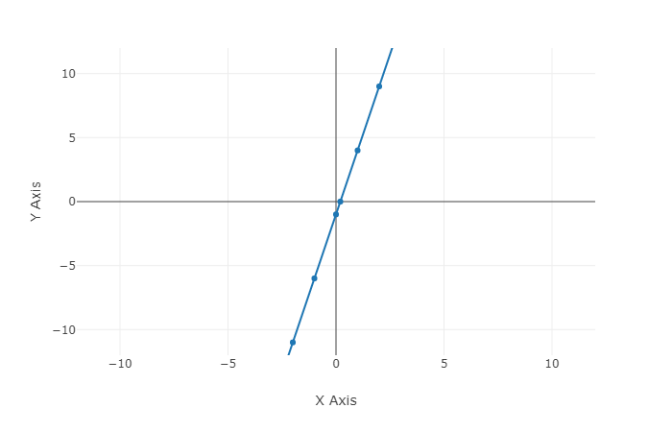Question
Question: How do you determine the linear function whose graph is a line that contains the points \(\left( { -...
How do you determine the linear function whose graph is a line that contains the points (−1,−8) and (2,10) ?
Solution
The equation of a line that passes through two points can be calculated by using the two-point form of the equation of a line. We will substitute the given two points into the two-point form of a line. Then after simplifying we can determine the required linear function.
Formula used:
The two-point form of a line passing through the points (x1,y1) and (x2,y2) is given by x−x1y−y1=x2−x1y2−y1 .
Complete step-by-step answer:
As we know we can determine the equation of a line that passes through two points by using the two-point form of a line.
Now, the two given points are
A=(−1,−8) and B=(2,10) .
Now, we know that the first coordinate is the x-coordinate and the second coordinate is the y-coordinate.
Here,
For point A, x1=−1 and y1=−8
For point B, x2=2 and y2=10
Now, as we know that, the two-point form of a line is
x−x1y−y1=x2−x1y2−y1 .
Now, we can determine the linear function by substituting the x1=−1 , x2=2 , y1=−8 and y2=10 in the two-point form of the equation of a line.
After substituting the values, we get
x−(−1)y−(−8)=2−(−1)10−(−8)
Now, after opening the brackets of numerators as well as denominators on both sides, we get
⇒x+1y+8=2+110+8
⇒x+1y+8=318
On Right-hand side, simplifying by dividing 18 by 3 , we have
⇒x+1y+8=16
Now, by cross multiplying, we get
1(y+8)=6(x+1)
⇒y+8=6x+6
Now, by subtracting 8 on both sides, we get
⇒ y+8−8=6x+6−8
⇒y=6x−2
∴ y=6x−2 is the required linear function whose graph is a line that passes through the points (−1,−8) and (2,10).
Note:
There is an alternate way to prove the two points form of the equation of a straight line. Consider the point-slope form of the equation of a line,
we have, y−y1=m(x−x1) - - - - - - (1.)
Since the line is passing through the point (x1,y1) in (1.) and the slope of the line is m=x2−x1y2−y1 . So, (1.) becomes y−y1=(x2−x1y2−y1)(x−x1).
